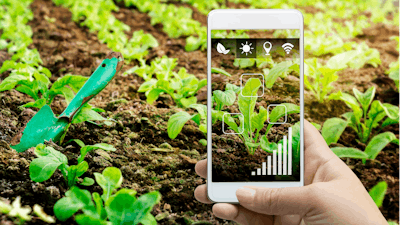
Wide-ranging use of smart technologies is raising global agricultural production, but international researchers warn this digital-age phenomenon could reap a crop of another kind – cybersecurity attacks.
Complex IT and math modeling at King Abdulaziz University in Saudi Arabia, Aix-Marseille University, France, and Flinders University in South Australia has highlighted the risks in a new article in the open access journal Sensors.
“Smart sensors and systems are used to monitor crops, plants, the environment, water, soil moisture, and diseases,” said lead author Abel Alahmadi from King Abdulaziz University. “The transformation to digital agriculture would improve the quality and quantity of food for the ever-increasing human population, which is forecast to reach 10.9 billion by 2100.”
This progress in production, genetic modification for drought-resistant crops, and other technologies is prone to cyber-attack – particularly if the ag-tech sector doesn’t take adequate precautions like other corporate or defense sectors, researchers warn.
Flinders University researcher Saeed Rehman says the rise of internet connectivity and smart low-power devices has facilitated the shift of many labor-intensive food production jobs into the digital domain, including modern techniques for accurate irrigation, soil and crop monitoring using drone surveillance.
“However, we should not overlook security threats and vulnerabilities to digital agriculture, in particular possible side-channel attacks specific to ag-tech applications,” said Rehman, an expert in cybersecurity and networking. “Digital agriculture is not immune to cyber-attack, as seen by interference to a U.S. watering system, a meatpacking firm, wool broker software and an Australian beverage company.”
“Extraction of cryptographic or sensitive information from the operation of physical hardware is termed side-channel attack,” added Flinders co-author David Glynn. “These attacks could be easily carried out with physical access to devices, which the cybersecurity community has not explicitly investigated.”
The researchers recommend investment into precautions and awareness about the vulnerabilities of digital agriculture to cyber-attack — with an eye on the potential serious effects on the general population in terms of food supply, labour and flow-on costs.






















